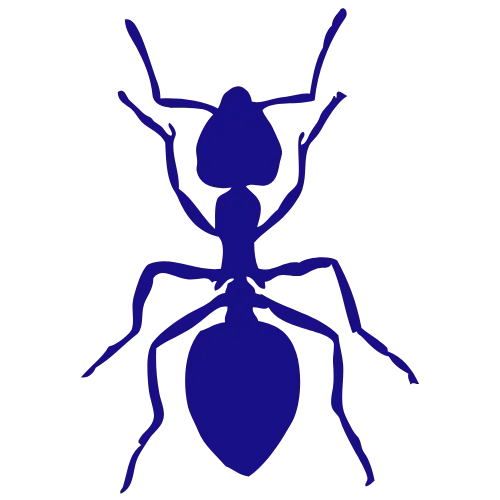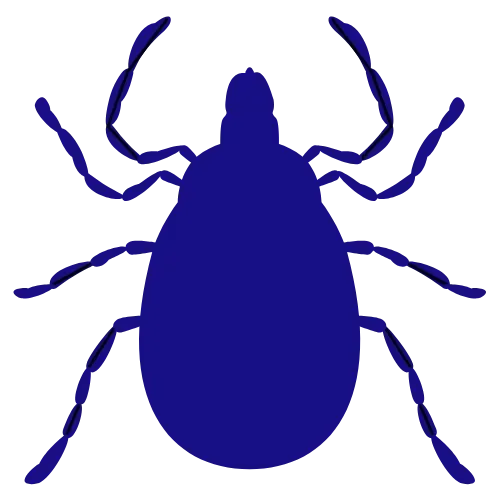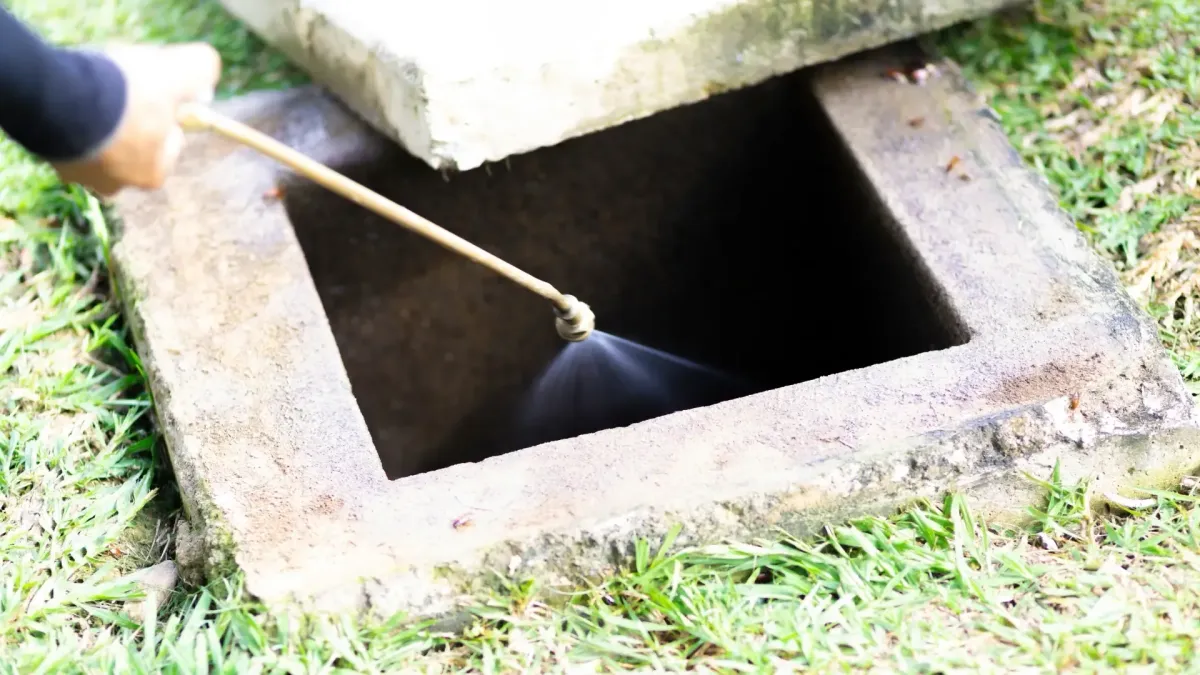
SPIDERS ANTS &TICKS
Protect your family, pets and business from venomous spiders, destructive ants and disease ridden ticks.

SPIDERS ANTS &TICKS
Protect your family, pets and business from venomous spiders, destructive ants and disease ridden ticks.
Dont Wait Until They Start Multiplying
Having An Infestation Problem?

Why Are Ants In My House?
Food Sources:
Ants are drawn to sugary, greasy, or protein-rich foods, such as crumbs, spilled drinks, pet food, or unsealed pantry items (e.g., sugar, honey, cereals). Even tiny residues on counters or in trash cans attract them. Common culprits include kitchens, dining areas, or garbage bins.
Entry Points:
Ants enter through tiny gaps—cracks in walls, gaps around windows, doors, or pipes, and even electrical outlets. They can exploit openings as small as 1/16 inch. Open doors or windows, especially in warm months like July, provide easy access.
Water and Moisture:
Ants need water and are attracted to damp areas like leaky faucets, pet water bowls, condensation on pipes, or overwatered plants. Bathrooms, kitchens, and basements with high humidity (common in summer) are hotspots.
Shelter and Nesting:
Ants seek safe places to nest, such as wall voids, under floors, behind baseboards, or in cluttered areas. Warm indoor conditions in July provide ideal shelter, especially for species like pavement ants that nest near foundations.
Outdoor Attractants:
Nearby outdoor sources, like aphid-infested plants (which produce sweet honeydew), unsecured garbage, or mulch near your home, draw ants closer. Colonies in your yard or a neighbor’s property can send scouts indoors, especially in warm weather.

Why Are Spiders In My House?
Abundant Prey:
Spiders feed on insects like flies, mosquitoes, ants, or other small pests. If you’ve noticed flies or mosquitoes in your home (as discussed previously), these could be attracting spiders. Kitchens, basements, or areas with crumbs or sugary spills draw prey insects, which in turn lure spiders.
Entry Points:
Spiders enter through small gaps, such as cracks in walls, gaps around windows, doors, or vents, and torn screens. They can also hitch a ride on firewood, plants, or boxes brought inside. Open doors or windows, especially in warm months.
Shelter and Hiding Spots:
Spiders seek dark, undisturbed areas to build webs or hide, such as corners, basements, attics, closets, or behind furniture. Cluttered areas, stored boxes, or piles of laundry offer ideal hiding spots. They also prefer warm, stable indoor environments, especially during summer or fall transitions.
Moisture and Humidity:
Many spider species thrive in humid, damp areas like bathrooms, basements, or near leaky pipes, where their prey (e.g., mosquitoes, as discussed) also congregates. High humidity (common in July) supports both spiders and their food sources.
Outdoor Conditions:
Nearby outdoor factors, like overgrown vegetation, woodpiles, or exterior lighting, attract insects that spiders feed on. These insects draw spiders closer to your home, increasing the chance they’ll enter. Seasonal changes (spiders seeking warmth in fall) can also drive them indoors.

Why Are There So Many Ticks?
Favorable Habitat:
Ticks thrive in warm, humid environments with dense vegetation, such as wooded areas, tall grasses, brush, or leaf litter. If your area has forests, parks, or overgrown yards, it provides ideal tick habitats. Shaded, moist areas under trees or near streams) are especially attractive.
Why It Matters: Ticks like deer ticks (Ixodes scapularis) or dog ticks (Dermacentor variabilis) rest in vegetation, “questing” for hosts (e.g., humans, pets, deer) to latch onto. Abundant vegetation increases their population density.
Abundant Hosts:
Ticks feed on the blood of mammals (deer, rodents, pets), birds, or humans. Areas with high wildlife populations (deer, mice) or frequent pet activity (e.g., dog parks) support tick reproduction. For example, white-footed mice are key hosts for Lyme disease-carrying ticks.
Warm and Humid Weather:
Ticks are most active in warm, humid conditions (above 45°F, thriving in 70-85°F), common in July. High humidity prevents desiccation, extending their survival. Recent weather patterns (e.g., mild winters or wet springs in 2025) can increase tick survival and activity.
Human and Pet Activity:
If your area has heavy outdoor activity (hiking trails, camping, or backyards used by pets), ticks can hitch rides on people or animals, spreading into yards or even homes. Unchecked pets or clothing brought indoors can introduce ticks.
Lack of Natural Predators or Control:
Ticks have few natural predators (birds, certain insects), and urban sprawl or reduced predator populations (like foxes) can allow ticks to proliferate. Lack of landscaping maintenance (unmowed grass, uncleared leaf litter) or community pest control efforts also contributes.
Get Affordable, Eco-Friendly Results Every time
THE DOUBLE D FLY SOLUTION
STEP 1
Detailed Inspection and Pest Identification
Inspect the client’s property for signs: ant trails, droppings, or nests (kitchens, bathrooms); spider webs or egg sacs (corners, basements); tick presence (yards, pets, vegetation).
Identify pest species (e.g., Argentine ants, carpenter ants; house spiders, orb-weavers; deer ticks, dog ticks) to tailor treatments based on behavior and habitat.
Locate attractants (food, water, prey for spiders), entry points (gaps, torn screens), and breeding/nesting sites (standing water for ticks, wall voids for ants, cluttered areas for spiders).
Provide clients with a clear report and customized plan.
Get Affordable, Eco-Friendly Results Every time
THE DOUBLE D FLY SOLUTION
STEP 1
Detailed Inspection and Pest Identification
Inspect the client’s property for signs: ant trails, droppings, or nests (kitchens, bathrooms); spider webs or egg sacs (corners, basements); tick presence (yards, pets, vegetation).
Identify pest species (e.g., Argentine ants, carpenter ants; house spiders, orb-weavers; deer ticks, dog ticks) to tailor treatments based on behavior and habitat.
Locate attractants (food, water, prey for spiders), entry points (gaps, torn screens), and breeding/nesting sites (standing water for ticks, wall voids for ants, cluttered areas for spiders).
Provide clients with a clear report and customized plan.
STEP 2
Targeted Elimination and Exclusion
Ants: Deploy bait stations (e.g., boric acid-based) to target colonies and disrupt pheromone trails. Apply indoor-safe sprays in high-traffic areas.
Spiders: Vacuum webs and egg sacs, use residual sprays (e.g., pyrethroids) in corners, and reduce prey insects (e.g., flies, ants) with traps or treatments.
Ticks: Apply EPA-approved acaricides (e.g., permethrin) to yards and vegetation. Use traps or targeted sprays indoors for ticks brought in by pets.
STEP 2
Targeted Elimination and Exclusion
Ants: Deploy bait stations (e.g., boric acid-based) to target colonies and disrupt pheromone trails. Apply indoor-safe sprays in high-traffic areas.
Spiders: Vacuum webs and egg sacs, use residual sprays (e.g., pyrethroids) in corners, and reduce prey insects (e.g., flies, ants) with traps or treatments.
Ticks: Apply EPA-approved acaricides (e.g., permethrin) to yards and vegetation. Use traps or targeted sprays indoors for ticks brought in by pets.
STEP 3
Prevention and Ongoing Support
Educate clients: store food in airtight containers, maintain clean drains and yards, trim vegetation (ticks), and reduce clutter (spiders, ants). Apply preventative measures: install fine-mesh screens, use residual barrier treatments for yards (ticks), or place ant baits in high-risk areas.
Schedule a follow-up visit within 7-14 days to monitor for activity, check traps or baits, and reapply treatments if needed. Provide a detailed service report with tailored maintenance tips and contact info for future support.
STEP 3
Prevention and Ongoing Support
Educate clients: store food in airtight containers, maintain clean drains and yards, trim vegetation (ticks), and reduce clutter (spiders, ants). Apply preventative measures: install fine-mesh screens, use residual barrier treatments for yards (ticks), or place ant baits in high-risk areas.
Schedule a follow-up visit within 7-14 days to monitor for activity, check traps or baits, and reapply treatments if needed. Provide a detailed service report with tailored maintenance tips and contact info for future support.
Prompt, Reliable Service That Everyone Loves
Here’s what our customers say about us...
Prompt, Reliable Service That Everyone Loves
Here’s what our customers say about us...
Still Not Sure?
Frequently Asked Questions
If you have any questions bugging you, hopefully these answers help!
Are the spiders in my home dangerous?
Most house spiders (cellar spiders, wolf spiders) are harmless, causing only minor bites or irritation. However, some species, like black widows or brown recluses (rare indoors), can pose health risks. We assess your home to identify spider types and use safe treatments to eliminate any threats.
How can I tell if I have a spider infestation?
Frequent webs in corners, ceilings, or basements, sightings of multiple spiders, or egg sacs (small, silken bundles) indicate an infestation. Abundant prey insects (flies, ants) often signal a larger spider problem. Our team inspects your property to confirm and address the issue quickly.
How quickly can you get rid of spiders?
Small spider problems can be resolved in 3-7 days by removing webs, reducing prey insects, and sealing entry points. Larger infestations may take 1-2 weeks if nests or prey sources persist. Our 3-step process, inspection, elimination, and prevention, ensures fast, lasting results.
Are ticks dangerous to my family or pets?
Yes, ticks can transmit diseases like Lyme disease, Rocky Mountain spotted fever, or babesiosis, posing risks to humans and pets. Bites may also cause irritation or infections. We use safe, EPA-approved treatments to eliminate ticks and protect your family, pets, and home.
How can I tell if I have a tick infestation?
Frequent tick sightings on pets, people, or in your yard (especially in grass or shrubs), or bites after outdoor activities, indicate a problem. Ticks may also be brought indoors on clothing or pets. Our team assesses your property to confirm and address infestations quickly.
How quickly can you get rid of ticks?
Small infestations (ticks in a yard) can be controlled in 1-2 weeks with targeted sprays and habitat management. Larger issues near wooded areas may take 2-4 weeks. Our 3-step process, inspection, elimination, and prevention, delivers fast, lasting results.
How can I tell if I have an ant infestation?
Visible ant trails, especially in kitchens or bathrooms, small piles of dirt near nests (pavement ants), or frequent sightings of ants indicate an infestation. Carpenter ants may leave sawdust-like debris. We assess your property to confirm the issue and target nests for quick resolution.
Are ants dangerous to my health or property?
Most ants (Argentine, odorous house ants) are nuisances, contaminating food or surfaces. Carpenter ants can damage wood structures by nesting in damp areas. While health risks are low, ants can spread bacteria. Our safe treatments eliminate ants and protect your home from damage.
How can I prevent ants from coming back?
Store food in airtight containers, clean spills immediately, and secure trash. Seal cracks, repair screens, and fix leaks to reduce moisture. Regular outdoor maintenance (trimming plants) helps. We provide customized prevention plans and follow-up visits to keep your home ant-free.
Still Not Sure?
Frequently Asked Questions
If you have any questions bugging you, hopefully these answers help!
Are the spiders in my home dangerous?
Most house spiders (cellar spiders, wolf spiders) are harmless, causing only minor bites or irritation. However, some species, like black widows or brown recluses (rare indoors), can pose health risks. We assess your home to identify spider types and use safe treatments to eliminate any threats.
How can I tell if I have a spider infestation?
Frequent webs in corners, ceilings, or basements, sightings of multiple spiders, or egg sacs (small, silken bundles) indicate an infestation. Abundant prey insects (flies, ants) often signal a larger spider problem. Our team inspects your property to confirm and address the issue quickly.
How quickly can you get rid of spiders?
Small spider problems can be resolved in 3-7 days by removing webs, reducing prey insects, and sealing entry points. Larger infestations may take 1-2 weeks if nests or prey sources persist. Our 3-step process, inspection, elimination, and prevention, ensures fast, lasting results.
Are ticks dangerous to my family or pets?
Yes, ticks can transmit diseases like Lyme disease, Rocky Mountain spotted fever, or babesiosis, posing risks to humans and pets. Bites may also cause irritation or infections. We use safe, EPA-approved treatments to eliminate ticks and protect your family, pets, and home.
How can I tell if I have a tick infestation?
Frequent tick sightings on pets, people, or in your yard (especially in grass or shrubs), or bites after outdoor activities, indicate a problem. Ticks may also be brought indoors on clothing or pets. Our team assesses your property to confirm and address infestations quickly.
How quickly can you get rid of ticks?
Small infestations (ticks in a yard) can be controlled in 1-2 weeks with targeted sprays and habitat management. Larger issues near wooded areas may take 2-4 weeks. Our 3-step process, inspection, elimination, and prevention, delivers fast, lasting results.
How can I tell if I have an ant infestation?
Visible ant trails, especially in kitchens or bathrooms, small piles of dirt near nests (pavement ants), or frequent sightings of ants indicate an infestation. Carpenter ants may leave sawdust-like debris. We assess your property to confirm the issue and target nests for quick resolution.
Are ants dangerous to my health or property?
Most ants (Argentine, odorous house ants) are nuisances, contaminating food or surfaces. Carpenter ants can damage wood structures by nesting in damp areas. While health risks are low, ants can spread bacteria. Our safe treatments eliminate ants and protect your home from damage.
How can I prevent ants from coming back?
Store food in airtight containers, clean spills immediately, and secure trash. Seal cracks, repair screens, and fix leaks to reduce moisture. Regular outdoor maintenance (trimming plants) helps. We provide customized prevention plans and follow-up visits to keep your home ant-free.
Make Sure Pests Never Make It Back Into Your Home
Read Our Latest Blogs
Make Sure Pests Never Make It Back Into Your Home
Read Our Latest Blogs

Pests Don’t Stand a Chance. Call the Double D Difference.
Working hours
Open – Mon-Sat: 8:00 AM – 5:00 PM
Closed – Sun and Public Holidays


Check Out Other Double D Services
Rodent
Control
Mosquito Management
Fly
Control
Trusted by Families and Farmers
Get Custom Solutions For A Better Price
Subscribe today to get 10% off your first pest control service.



Pests Don’t Stand a Chance. Call the Double D Difference.
Working hours
Open – Mon-Sat: 8:00 AM – 5:00 PM
Closed – Sun and Public Holidays

Check Out Other Double D Services
Fly Control
Mosquito Treatment
Rodent
Control
Trusted by Families
and Farmers
Get Custom Solutions For A Better Price
Subscribe today to get 10% off your first pest control service.

© Copyright 2025 Double D Fly Control | Double D Fly Control LLC, All Rights Reserved













